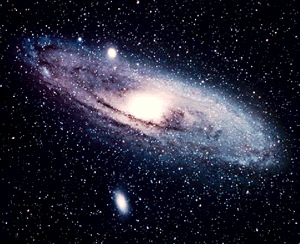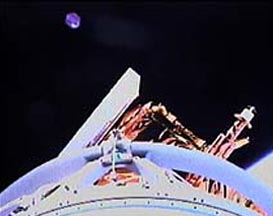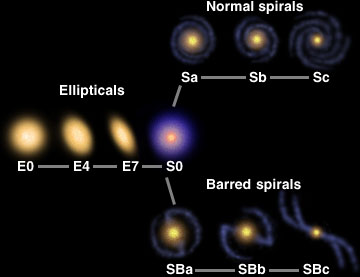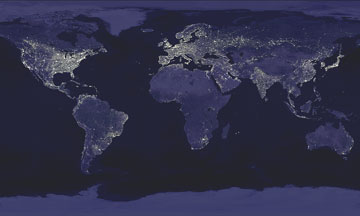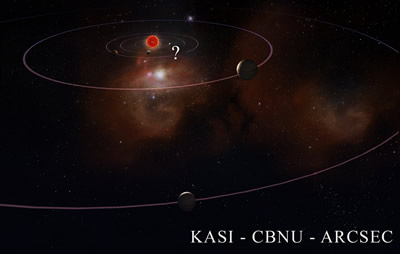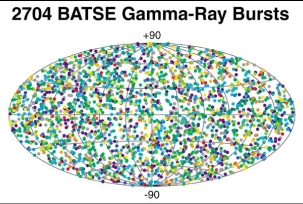The Milky Way Galaxy - Our Home
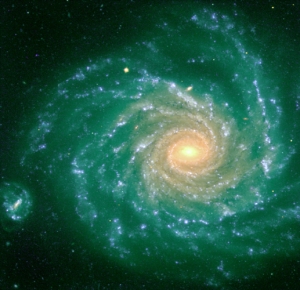
|
The Milky Way galaxy is the
spiral galaxy we call home, as do roughly 100 billion other
stars. It looks very much like other spiral galaxies when viewed from
above. There are spiral arms and a bright central part. The Sun is
far from the center of the Galaxy, halfway to the edge of the Galaxy
along the Orion spiral arm.
The Sun is revolving around the center of the Galaxy at a speed of half a million miles per hour, yet it will still take 200 million years for it to go around once. Do you feel like you are moving at that speed through space? If you did, you would certainly need a seat belt! When we run, we feel the wind on our bodies because there are molecules which make up the air that push against our bodies. But there are very few molecules in the space between the stars. So there is nothing to push against our planet so that we "feel" like we are rushing around at half a million miles per hour.
|
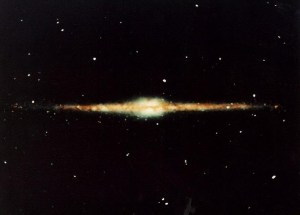
A galaxy like the Milky Way as viewed from the top, and the
actual Milky Way as viewed in the infrared
|
Like other spiral galaxies, the Milky Way has a bulge, a disk, and a halo. Although all are parts of the same galaxy, each contains different objects. The halo and central bulge contain old stars and the disk is filled with gas, dust, and young stars. Our Sun is itself a fairly young star at only 5 billion years old. The Milky Way galaxy is at least 5 billion years older than that. |
 Questions and answers about the Milky Way
Questions and answers about the Milky Way
 A Matter of Scale - interactive showing the sizes of things, from very tiny to huge - from NSF
A Matter of Scale - interactive showing the sizes of things, from very tiny to huge - from NSF






